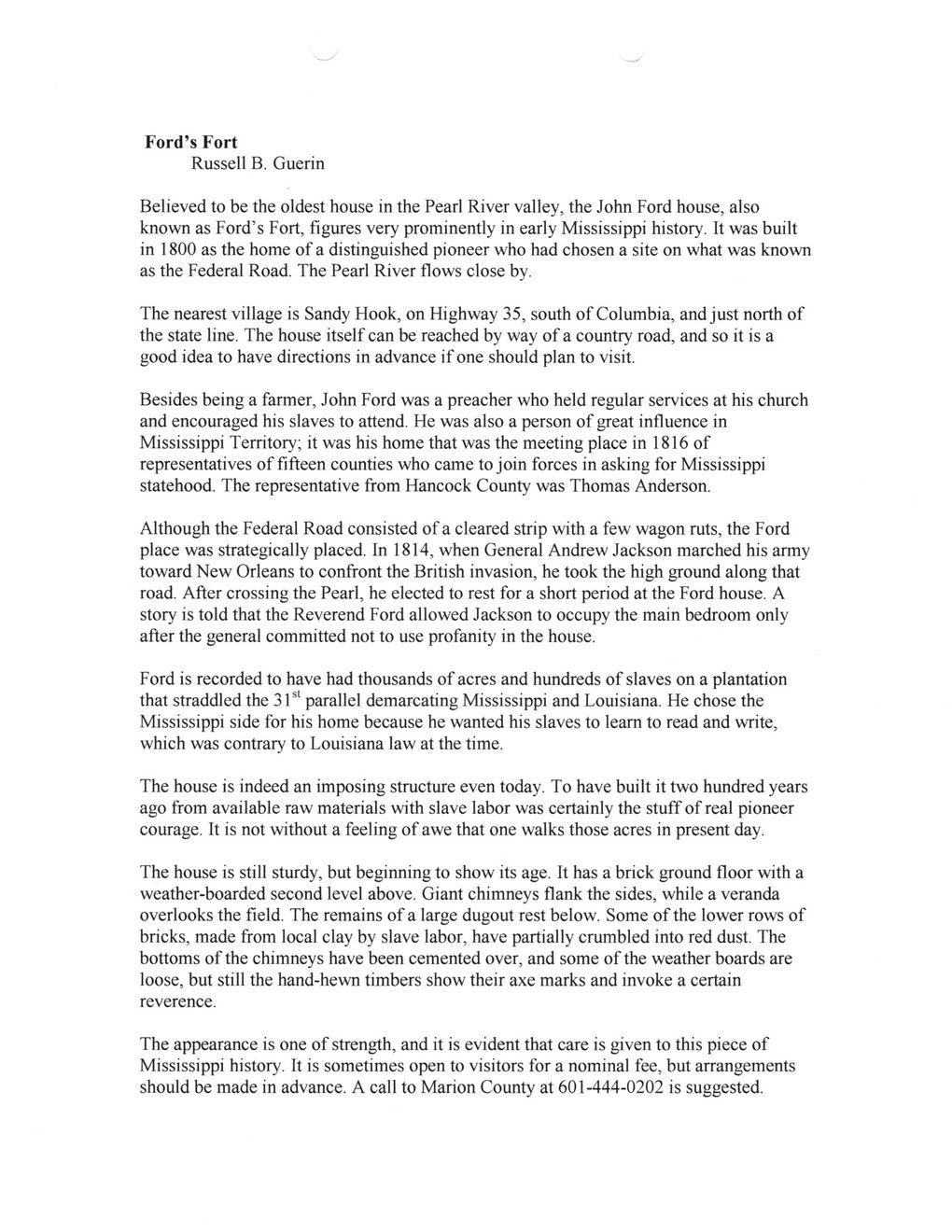This text was obtained via automated optical character recognition.
It has not been edited and may therefore contain several errors.
Ford?s Fort Russell B. Guerin Believed to be the oldest house in the Pearl River valley, the John Ford house, also known as Ford?s Fort, figures very prominently in early Mississippi history. It was built in 1800 as the home of a distinguished pioneer who had chosen a site on what was known as the Federal Road. The Pearl River flows close by. The nearest village is Sandy Hook, on Highway 35, south of Columbia, and just north of the state line. The house itself can be reached by way of a country road, and so it is a good idea to have directions in advance if one should plan to visit. Besides being a farmer, John Ford was a preacher who held regular services at his church and encouraged his slaves to attend. He was also a person of great influence in Mississippi Territory; it was his home that was the meeting place in 1816 of representatives of fifteen counties who came to join forces in asking for Mississippi statehood. The representative from Hancock County was Thomas Anderson. Although the Federal Road consisted of a cleared strip with a few wagon ruts, the Ford place was strategically placed. In 1814, when General Andrew Jackson marched his army toward New Orleans to confront the British invasion, he took the high ground along that road. After crossing the Pearl, he elected to rest for a short period at the Ford house. A story is told that the Reverend Ford allowed Jackson to occupy the main bedroom only after the general committed not to use profanity in the house. Ford is recorded to have had thousands of acres and hundreds of slaves on a plantation that straddled the 31st parallel demarcating Mississippi and Louisiana. He chose the Mississippi side for his home because he wanted his slaves to learn to read and write, which was contrary to Louisiana law at the time. The house is indeed an imposing structure even today. To have built it two hundred years ago from available raw materials with slave labor was certainly the stuff of real pioneer courage. It is not without a feeling of awe that one walks those acres in present day. The house is still sturdy, but beginning to show its age. It has a brick ground floor with a weather-boarded second level above. Giant chimneys flank the sides, while a veranda overlooks the field. The remains of a large dugout rest below. Some of the lower rows of bricks, made from local clay by slave labor, have partially crumbled into red dust. The bottoms of the chimneys have been cemented over, and some of the weather boards are loose, but still the hand-hewn timbers show their axe marks and invoke a certain reverence. The appearance is one of strength, and it is evident that care is given to this piece of Mississippi history. It is sometimes open to visitors for a nominal fee, but arrangements should be made in advance. A call to Marion County at 601-444-0202 is suggested.

Fords Fort Russell-Guerin-Article-(2007)